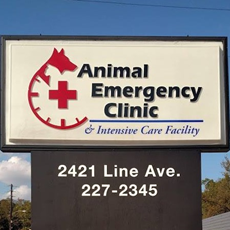Library
-
Summertime is filled with lots of fun, but also follies. Besides the common threats of heat stroke and dehydration, pet owners need to be aware of the potential dangers associated with summer activities. Cookout fires can be dangerous and party menus often contain foods that can be harmful to pets. Outdoor celebrations that involve glow sticks or balloons can be threats as well. A quick review of possible follies will ensure a fun, safe summer with pets.
-
Summer is a great time to get outdoors and enjoy nature and the warm sunshine, especially with your pet. Pets are inquisitive and love to investigate their surroundings. Unfortunately, this trait can lead pets down the path of injury and illness. The following information will help you to avoid many summer dangers that can affect your pet.
-
A supplement is a concentrated nutrient source that is added to a basic diet for either a nutritional or a therapeutic effect.
-
A supplement is a concentrated nutrient source that is added to a basic diet for either a nutritional or a therapeutic effect. Effective use of supplements requires the consideration of patient factors, such as the organ system that needs support, and product factors, such as dosage, safety, efficacy and balance.
-
An epidemic of obesity in both humans and companion animals has spawned a large trade in weight loss supplements. Some, such as those which contain ephedrine, have been eliminated from the market in the United States and Canada due to potential adverse cardiac effects.
-
Whole food supplements, or glandular therapies, are supplements made from glands, organs or tissues from healthy animals. These supplements may be administered as whole fresh tissue or as tissue extracts.
-
A supplement is a concentrated ingredient that is added to the diet for nutritional or therapeutic benefits. Your best source of professional nutritional advice is a licensed veterinarian who is knowledgeable about supplements.
-
Home care after surgery mainly involves the restriction of physical activity. Excessive physical activity often leads to injury or serious complications. Monitor the incision daily for signs of redness, swelling, discharge, or excessive licking, and never apply anything to the incision unless instructed to do so. To keep your dog from licking, your veterinarian can provide you with a protective collar or recovery suit. Your dog should gradually improve each day.
-
Each surgical patient is unique, so pain management strategies are fine-tuned to meet the needs of the individual cat before, during, and after surgery. Your veterinarian will begin managing your cat's pain before the procedure starts by giving preemptive pain medication. During surgery, strategies such as local freezing, continuous rate infusions, and anesthetic blocks may be used. After surgery, pain relief continues, with at-home medication and possibly physical medicine modalities.
-
The main objectives of fracture repair are to promote rapid healing of the fracture and to get the dog using its leg as quickly as possible. In most cases, this involves rebuilding the broken bone and fixing it in that position with metallic implants. Post-operative care includes pain medications, antibiotics, adequate nutrition, exercise restriction, and physiotherapy. Most fractures can be repaired very effectively and in many cases, your dog will resume normal activity.




